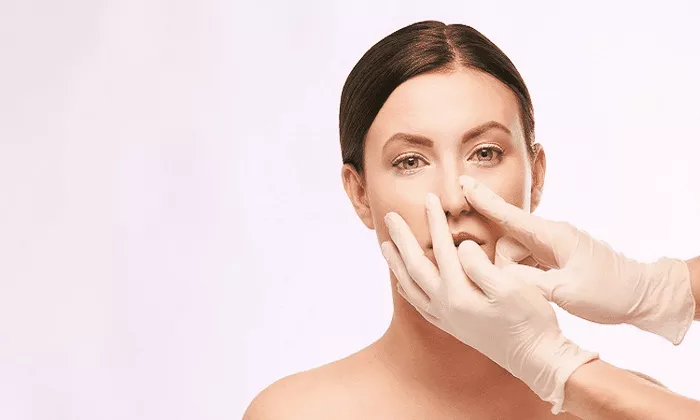Rhinoplasty, commonly known as a nose job, is a surgical procedure aimed at enhancing the appearance and function of the nose. Whether you have undergone rhinoplasty to address cosmetic concerns or correct a breathing issue, it is important to have a clear understanding of the recovery process. After four weeks of healing, you can expect significant improvements in your nasal appearance and overall well-being. Here’s a comprehensive guide to help you understand what to expect during this crucial phase of your rhinoplasty recovery.
Subtle Swelling and Bruising
At the four-week mark, most of the swelling and bruising from the surgery will have subsided. However, it’s important to note that some residual swelling may still be present, especially around the nasal tip. This residual swelling is usually subtle and only noticeable to you and your surgeon. Over time, as the healing process continues, the remaining swelling will gradually resolve, and you will notice further refinement of your nasal contours.
Improved Breathing
One of the primary goals of rhinoplasty is to improve nasal breathing. By the fourth week, you should experience a significant improvement in your breathing function. The internal nasal tissues will have healed to a large extent, allowing for better airflow through the nasal passages. If you had a deviated septum or other structural issues, you may notice a remarkable difference in your ability to breathe through your nose, which can greatly enhance your overall quality of life.
Enhanced Nasal Shape
By the four-week mark, you will start to see the initial results of your rhinoplasty. The shape and appearance of your nose will have improved compared to the immediate post-surgery period. However, it’s important to remember that your nose will continue to refine and settle over the coming months. The nasal tissues need time to heal fully and adapt to their new contours. So, while you will see positive changes at this stage, it’s essential to be patient and allow your nose to continue its healing journey.
Increased Comfort
At this point in your recovery, you should experience a significant reduction in discomfort and pain. Most patients find that they no longer require prescription pain medication by the fourth week. However, it is normal to still experience some mild tenderness or sensitivity around the surgical site. It’s crucial to continue following your surgeon’s post-operative instructions, which may include avoiding strenuous activities, refraining from blowing your nose forcefully, and being gentle while cleaning the nose.
Resuming Normal Activities
By the fourth week, you can gradually resume most of your regular activities. While you may still need to avoid activities that could put your nose at risk of injury, such as contact sports or heavy lifting, you can generally return to work or school. It’s essential to listen to your body and not push yourself too hard. Be mindful of any discomfort or fatigue and take breaks as needed. Consult with your surgeon before engaging in any strenuous exercise routines or activities that involve impact to ensure that your healing process is not compromised.
Final Results Take Time
Although you will see significant improvements at the four-week mark, it’s important to keep in mind that the final results of rhinoplasty can take several months to a year to fully manifest. Your nose will continue to refine and settle as the healing process progresses. It’s normal for subtle changes to occur during this time. Patience is key during this phase, as the final outcome of your rhinoplasty will become more apparent over time. Remember to maintain open communication with your surgeon, attend follow-up appointments, and follow their guidance throughout the healing process.
Scar Healing
The incisions made during rhinoplasty are typically well-concealed and placed inside the nostrils or along the natural creases of the nose. By the four-week mark, any visible scarring should be minimal and continue to fade over time. Proper wound care, such as keeping the incision sites clean and protected from excessive sun exposure, can aid in the healing process. If you have concerns about scarring, discuss with your surgeon about scar management techniques that can help minimize their appearance.
Emotional Adjustment
Undergoing rhinoplasty is a significant decision, and it’s natural to experience a range of emotions during the recovery period. By the fourth week, most patients begin to feel more comfortable with their new nasal appearance and regain their self-confidence. However, if you have concerns or feel overwhelmed, don’t hesitate to reach out to your surgeon or a support network. They can provide guidance, address any concerns, and offer reassurance during this transformative phase.
In conclusion, at four weeks post-rhinoplasty, you can expect a noticeable reduction in swelling and bruising, improved breathing function, and enhanced nasal shape. Discomfort and pain will significantly decrease, allowing you to resume normal activities gradually. Remember that the final results of rhinoplasty take time to fully manifest, and it’s important to be patient and follow your surgeon’s instructions. With proper care and patience, you will soon enjoy the long-term benefits of your rhinoplasty surgery.

